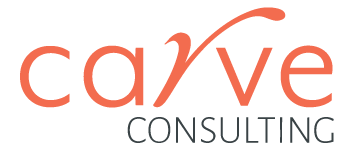Looking to make a change? A personal recommendation will always trump a good resume. But so often avoiding connecting with your network due to fear or lack of confidence will limit your opportunities and choices. Here’s how to build your network so more people know you and understand what you can do, without having to ask everyone for coffee or attend events.
Key takeaways
- The more people that know you and know how what you can do, the more options you’ll have.
- Making progress means making an intentional choice to be uncomfortable despite the fear.
- Be intentional and start with small actions that build a picture of you in other peoples minds.
For some people, being a connector seems to come naturally. We can probably all recognise the type – they move around networking events with a sense of ease, enjoying the experience and relishing in the banter and small talk with new acquaintances.
However, these people aren’t the majority, they are just the ones we can see and compare ourselves to. Some of those people might actually be learned connectors, who have gathered the necessary skills and put themselves into different networking situations to be able to do this well even if it doesn’t come naturally.
Then, there is the common experience, for the person this article may be of help. Those who hold back, avoid connecting or only interact with people you already know well. These are the people that when they’re looking to make a change or progress their careers are most likely to rely on advertised roles and weight of their resume, before seeking out internal development or reaching out to the network beyond their closest contacts.
While this approach of being behind a screen and relying on job ads or leaning on contacts, that probably know too much about you, may save some discomfort in the short term, it can have a much lower strike rate and be a constraining approach for your career.
For most people, careers aren’t linear, instead they develop in phases and have to adapt to a market where roles are evolving, and role requirements are changing. Because of that non-linear path, most of us will experience one or more career transitions or reinventions. To make that transition as smooth as possible, you need to understand how employer’s expectations are changing and the reality of evolving roles. The best way to learn is to have conversations and ask for advice. This exploration is very personal, and the knowledge isn’t yet available via search engines, so it can’t be automated.
Where do AI tools fit?
Before we move onto how to develop confidence to grow visibility and network, we need to address where AI fits into job search. AI tools are being heavily promoted everywhere, with a promise they can do everything from writing your cover letter and resume, matching to opportunities all while also identifying the key decision makers and send out your applications. There are others that promise a tailored application to job criteria, guaranteeing to be shortlisted for an interview through applicant tracking systems. There are no guarantees.
Of course, AI tools can be very useful. Yes, help writing an application is a huge time saver – as long as you use the right prompts and proofread carefully. And it’s important to understand how tracking systems work, because many large employers and recruiters are using them to streamline their process.
However, hiring is still a very human decision. And tools are just that – tools. To be considered for the roles that never make it to the public job boards, you need a human recommendation. Also, if everyone is working with the same tools, then you need to find another way to stand out, which may just be the personal recommendation.
And in fact, if you have a tendency to avoid building connections, the dangers with AI tools is you’re largely putting your fate in the computer’s hands. It may also be another excuse to avoid the discomfort of putting yourself out there, which won’t go away without confronting it.
Confronting the feelings of discomfort
Networking is an activity that often makes people feel uncomfortable. In fact, in a research study conducted at a law firm a few years ago, some people even said it made them feel ‘dirty’, and unsurprisingly, these people engaged in it less frequently. We find, whenever we talk about building networks in content or workshops, people retreat from the topic. Networking does have a bad name, so maybe we should reframe it to what it actually is, connecting with people in different ways.
If you feel you are someone who holds back or doesn’t naturally think to keep in touch with people you’ve met or worked with, then you’re in good company. Instead, start to think of it as a muscle that needs to be exercised.
The drivers of discomfort are most often a lack of confidence, and/or identifying as an introvert (‘I’m not a social person’). Often, this lack of confidence comes from fear – scared of how you’ll be perceived, worried that you’re bothering someone, anxiety about being rejected. Sometimes, it’s also that you never learnt the initial steps to build relationships.
In fact, those high profile people you see networking at events might not be blessed with more natural confidence – they may have had opportunities early in their career to connect with people and to ask for advice or introductions, and it worked. Or maybe they’ve just chosen to be courageous and put themselves in situations which pushed them past discomfort.
I read a great quote that said ‘the rewards you are seeking are on the other side of the actions you’re avoiding’. To step into the discomfort, you need to either believe that the rewards are worth it or the cost to stay the same is too great.
Start with simple steps
While it’s important not to shun networking entirely, it’s also worth realising that it’s not about going from zero to 100 in a short space of time. For example, it’s not necessary to start approaching someone out of the blue and inviting them for a coffee, asking them to block out their time for you.
Instead, think more about the possible connection points in between that slowly builds their awareness and experience of you.
Thinking about exploring options internally to develop skills or profile? Consider when you could be reaching out to people with a question or to acknowledge how valuable you found their work or way of thinking. Before considering a change, creating those connection points can start by making eye contact, saying hello (sounds obvious but so many people avoid it), speaking up in meetings, these are all small ways people get familiar with how and build a perception of how you think and communicate.
If you want to create that touch point externally, simply liking or commenting on LinkedIn content can then lead to asking them to connect. Your name starts to become familiar to them. In time you may send them a question or ask for advice, well before you ask for their time. Think about who in your industry you would like to get to know, follow them on LinkedIn and like or comment on their posts. Another way to build network that can be surprisingly fruitful is to do short courses, where you may get to connect with people on a deeper level.
After all, relationships are about building trust and can be a slow burn – you sometimes have to plant lots of seeds over time.
There’s no right way to go about developing your skills and confidence to build a network, as human interactions are very personal to everyone. However, there are some key steps you can follow in order to start making change.
- First, begin with your mindset, reframing networking from being something that you think of as creepy and uncomfortable to being curious to learn about new things and new people. Embrace it as an opportunity to learn about someone new – you never know where it may take you.
- Then, be intentional about who you want to know, and in which circles you want to become more visible. Targeted activities to a select audience are likely to be more valuable, lead to more connections, and also takes less energy.
- And start small, finding connection points with others and easy ways for plant a seed with someone that maybe leads to a future interaction or conversation.
Last thought
One conversation can be the turning point for a whole different opportunity, but the conversation was a result of many smaller interactions and connections over time. The more people that know you and know what you can do, the more doors may open.

